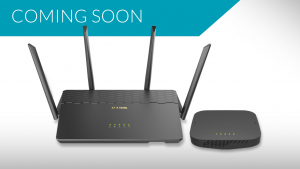
Expect a lot more out of the router that comes with your Internet service when Technicolor gets its way
The device that represents the network-Internet “edge” for your home network i.e. the router won’t just be serving that function in a standalone way anymore. Here, it will work in tandem with other Internet-side and network-side computing devices to become a highly-sophisticated “hub” for your home network.
One of these drivers is to provide a simplified customer-support process, especially for those of us who use carrier-provided equipment at the edge. Here, the support and provisioning process can be fulfilled by the router supplying information to your carrier or ISP regarding your Internet service’s and home network’s performance.without wasting time requiring the customer to supply this information during a support call. This may be considered controversial but has value regarding the support and troubleshooting process which can perplex those of us who aren’t competent with technology such as a lot of older people.
It also encompasses the fact that distributed Wi-Fi will be the “new norm” for the home network, whether through multiple access points connected to a wired or dedicated-wireless backbone, the use of one or more wireless range extenders or a mesh-driven distributed wireless network. Here, it may be about simplifying the process of commissioning the “satellite” wireless devices and making sure that they are performing as expected to assure maximum Wi-Fi coverage across your premises.
The other factor is for a call to provide for always-maintained software in these devices thanks to issues being raised regarding the security of our home networks and the Internet. It was underscored through the recent distributed denial-of-service attacks against various Internet services and blogs using the Mirai bot network that was running compromised software on routers, network cameras and the like which hosted poorly-maintained software to facilitate these attacks.
Let’s not forget that the home-network gateway device will be expected to do more in conjunction with cloud services. Here, they want to provide this kind of service in the same context as the “app-store” commonly associated with mobile computing platforms but increasingly associated with regular computing platforms, and an increasing number of dedicated-purpose devices like printers. It is where a customer can add on extra functionality to their home-network router after they have bought and installed that device rather than buying and installing a new device to achieve this goal.
I was learning about this thanks to a news release offered to me by Diego Gastaldi from Technicolor Connected home regarding this topic. Technicolor came in on this game thanks to buying in to Thomson who supplies a lot of the customer-premises equipment provisioned by telcos and ISPs for their broadband Internet service, especially the triple-play services. This company had presented at Mobile World Congress some of their new concepts for the home-network gateway devices that will be pitched to the likes of Telstra or Bouygues Télécom for their services along with how they can add that extra value.
This is in conjunction with Technicolor announcing their solutions for managed distributed Wi-Fi setups along with devices supporting wireline broadband and mobile wireless broadband on the Internet (WAN) side. The latter trend existed mainly with small-business equipment but its appeal for the home network is being underscored with the “quick-to-provide” goal for an interim wireless service before a wireline service is rolled out, a “fatter pipe” for broadband service by aggregating wireline and mobile broadband services; and always-available broadband for business, e-health / ageing-at-home and the smart home’s security.
The typical applications that will be called out would be to provide business-style “unified threat management” for the home network as a network security measure. Or they could be about joining a “community wireless” platform like Fon where they can share Wi-Fi bandwidth with guests or customers.
But they are also highlighting applications like monitoring elderly loved ones at home to be sure they are OK. Earlier on in 2010, I had a conversation with a representative from Ekahau regarding their Wi-Fi-based Real Time Location System in a residential or small-business environment. This was more so with their T301BD Wi-Fi Pager Tag, pitched primarily as a name tag with duress-alert abilities for healthcare and similar enterprise-level applications, being used as part of an “ageing at home” or similar home-based care scenario. Then I had noticed initial doubt about this kind of application in the home but such setups could be made real with distributed Wi-Fi and them being offered on a cloud-driven “as-a-service” model.
By using a multiple-computer “cloud” approach, there isn’t a requirement to overload a router device with extra processing circuitry which would require a large device to be designed. Typically this would be fulfilled by the use of one or more data centers connected to the Internet like the Amazon Web Services approach Technicolor are using. But, as the compact network-attached-storage maintains its appeal as an on-premises network storage hub with most of these devices offering “remote access” or “personal cloud” functionality, this kind of “cloud” approach could encompass these devices along with other “function-specific” hubs like smart meters or security systems.
But what is happening is that there will be more expectations out of the router device that sits between the home network and the Internet with it being a “gateway” to more online services.

